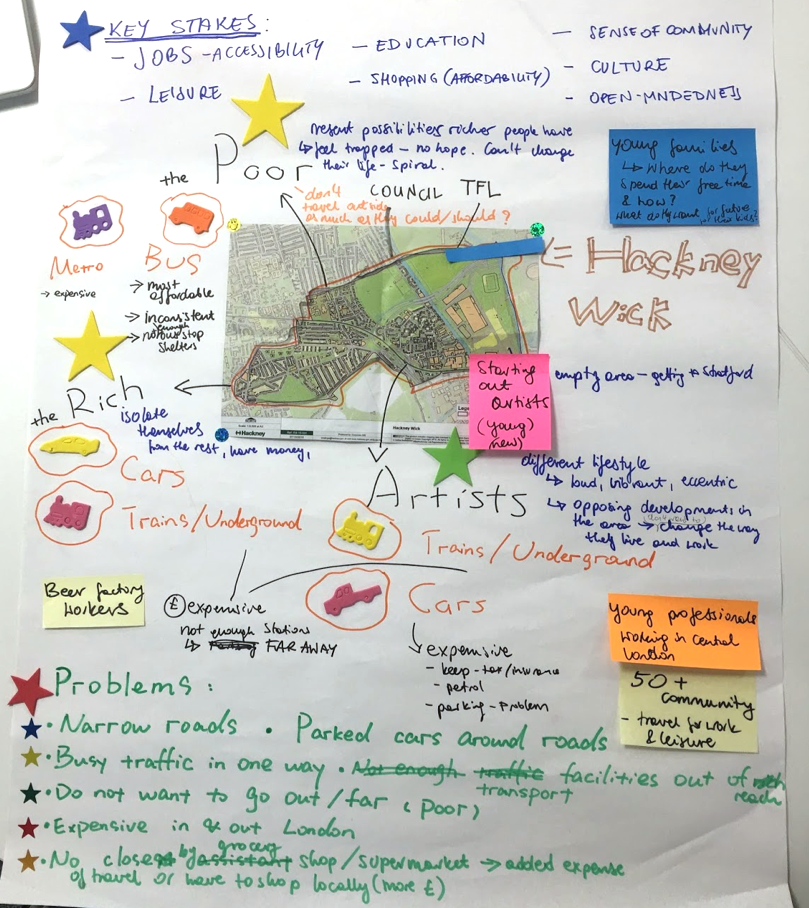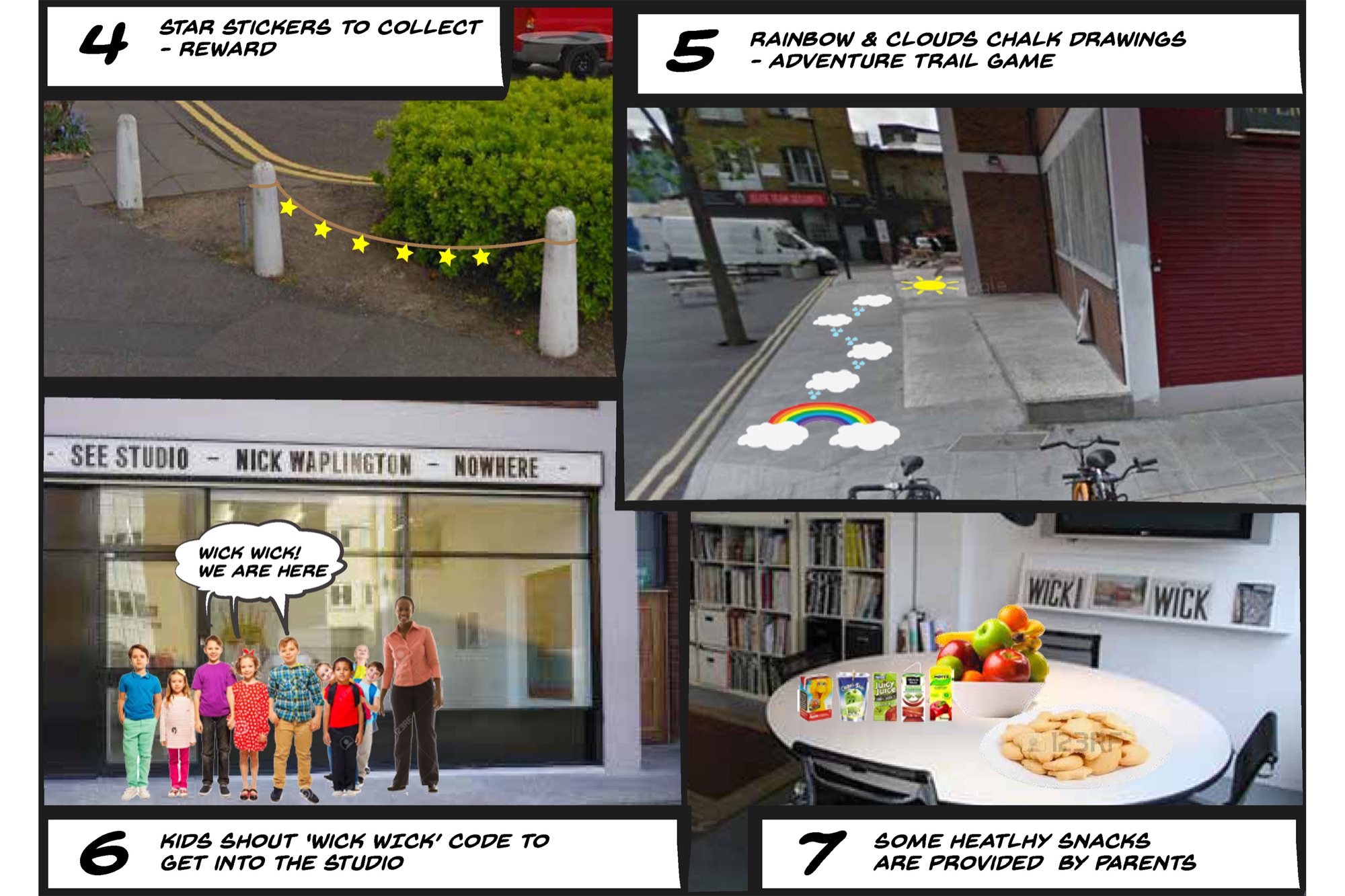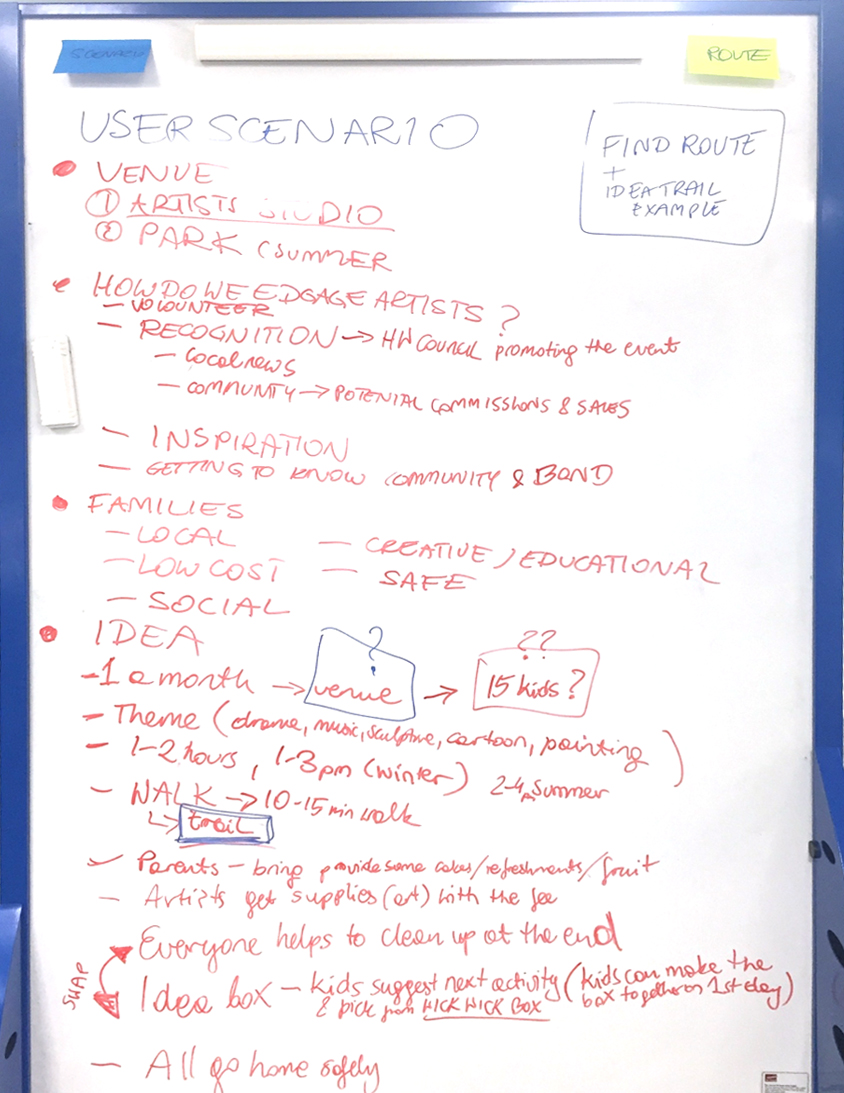Wicked Problem Brief for Hackney Wick Council
The project intended to address problems of social divide in Hackney Wick community. Rooted in issues of young families’ hesitance accessing London’s attractions and limited opportunities for creative activities for children in Hackney Wick, it tapped into rich local resources that are artists and Loughborough University London. Stemming from observed strong need for group interaction influencing the choice of leisure activities, the project intended to address needs of Hackney Wick’s young families for convenience, quality experience and strong social element.
Project Overview
Final Solution
The developed solution is Wick Wick Creative Kids Workshop, involving Loughborough University Masters Students and local artists, and incorporating walked adventure trail as a sustainable transport mode.
Approach
Working as part of a team of 5 designer-researchers with combined background in Design, Media and Entrepreneurship, the project encompassed:
- Exploration of Wicked Problems in Hackney Wick.
- Secondary Research
- Problem - Opportunity Space Exploration
- 3-stage Primary Research
- Insight Visualisation
- Prototyping and Testing
- Concept Refinement and Business Model
Wicked Problems Map
Wicked problems of Hackney wick were visually mapped based on the supportive information included in the brief and data from the Hackney Wick Ward Profile. Key issues related to:
- Divide between the three distinct groups within the community (artists, poor and rich) and their different needs and lifestyle.
- Main transport problems identified concerned affordability, access to transportation and its influence on leisure time choices for local families.

Initial Challenges & Opportunities
The mapped problems were categorized as ‘Challenges and Opportunities’. These were then narrowed down to one challenge-opportunity scenario of ‘People don’t want to venture outside of Hackney Wick’ vs ‘Promote events for Hackney people; entice them to go out’.
The focus was further distilled to access of Hackney Wick’s young families from moderately disadvantaged backgrounds to London’s attractions and culture, whose choices may be restricted by income, travel difficulties with children, and past experiences such as the parents’ upbringing.
Data Collection
Primary data collection was carried out in 3 stages, permitting corrective measures to be applied to participant scouting methods and interview questions. Total of 15 parent interviews were completed.
- Stage 1 – 4 participants
- Stage 2 – 9 participants
- Stage 3 – 2 participants

Insights
Initial data analysis was based on results from Data Collection 1. Findings included:
- Average family consists of 2 to 3 children.
- Preferred entertainment activities are sports, shopping, football, and cinema or museum visits.
- Overall, families were satisfied with quality of time spend together but Central London was an infrequent destination.

Next, data analysis was performed using affinity diagramming.
Main insights included:
- Strong preference for familyactivities which are relatively local and for for outdoor activity, if weather is favourable.
- Creative and dynamic play activities are important.
- Strong preference for group activity as social interaction element.
- London is a destination chosen on special occasions and relatively infrequently.

Empathy Mapping and Personas
Acase study of a father talking of struggles taking his child to a hospital was analysed as part of empathy exercise. The story highlighted how public transport can fail parents in sudden but very dangerous situations. The findings were then applied to develop adn refine user persona.
Problem Reframe
Connecting Families and Artists in Hackney Wick.
Bringing families and artists together to create engaging ways of spending quality time locally and connecting the two communities.
Representation:
- Families like to spend time locally
- Prefer outdoors, sports, drama and creative activities.
- Gainsborough Childrens Centre is only available to young kids.
- Families like when children spend time in groups.
- Artists have a diverse background and skills.
- Artists may enjoy sharing what they do with the local community.
- Spending time locally can enrich the community.
Concept Development
Concept development followed a three-stage process of idea generation, idea selection and idea development.
- Initial ideas were mapped using Amuse Me / Surprise Me / Excite Me / Satisfy Me tool.
- Constraints of feasibility, community impact and finance were applied to progress the idea selection.
- The selected idea was developed further by generating a more detailed user scenario with key touch points. User testing involved artists, parents adn university stakeholders. Key refinement areas included finance, location and leadership.
Refinement
The project’s value propositions address problems of social divide in Hackney Wick community, issues of young families’ hesitance accessing London’s attractions and limited opportunities for creative activities for children in Hackney Wick. By tapping into rich local resources that are artists and Loughborough University London, the workshop is to respond to a observed strong need for group interaction influencing the choice of leisure activities, and intends to address needs of Hackney Wick’s young families for convenience, quality experience and strong social element.
Key benefits include:
- Bringing the community closer
- Enhancing children’s mental development
- Shaping children’s interests
- Cross pollination of ideas
- Students gain leadership, organizational and mentoring skills








